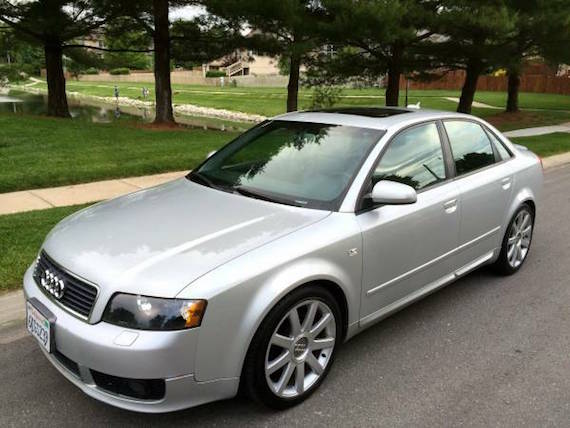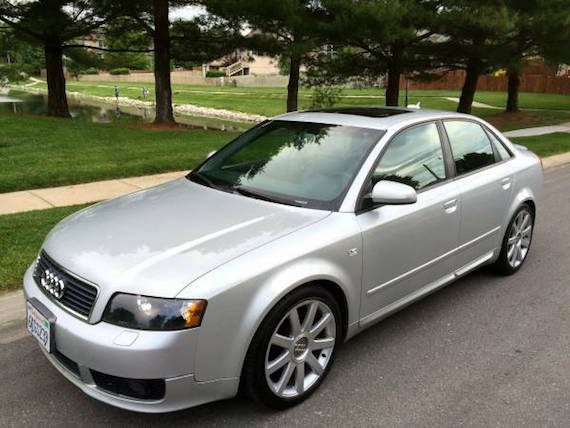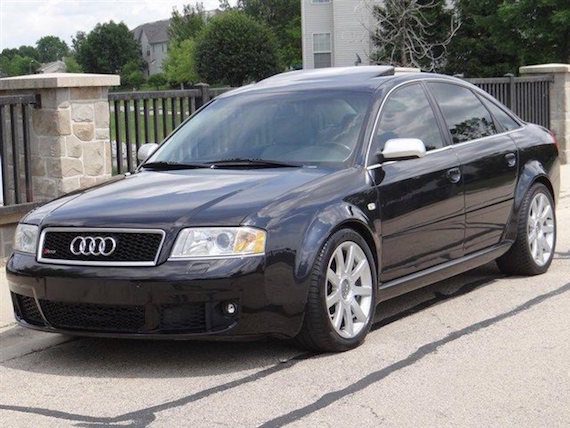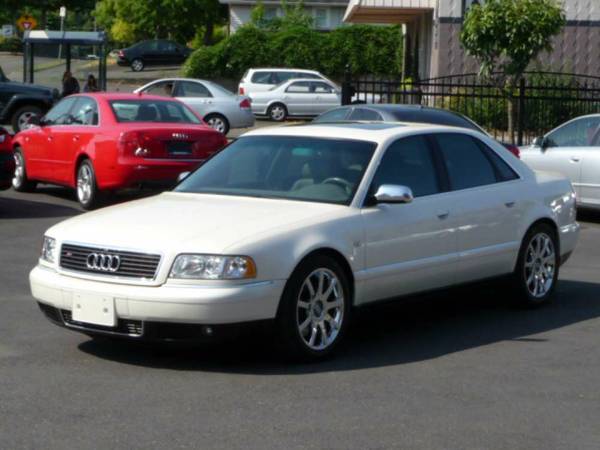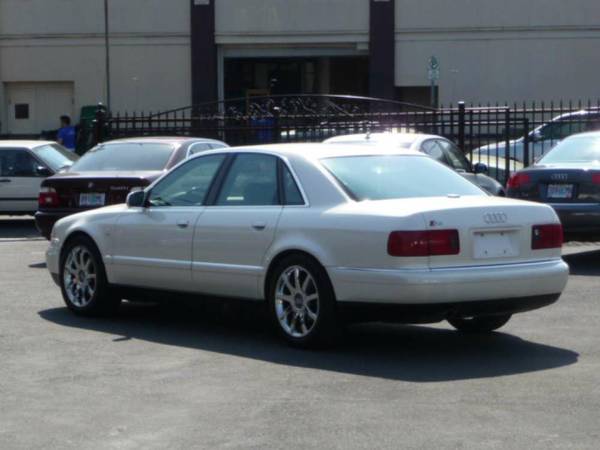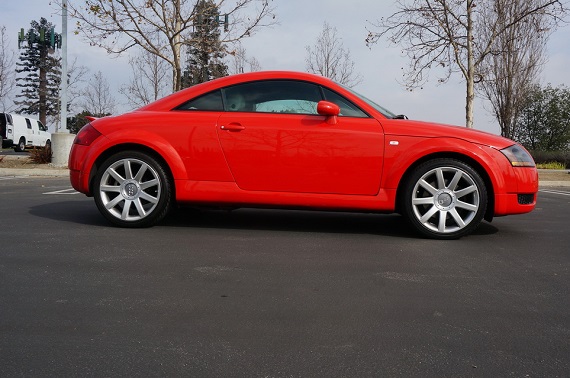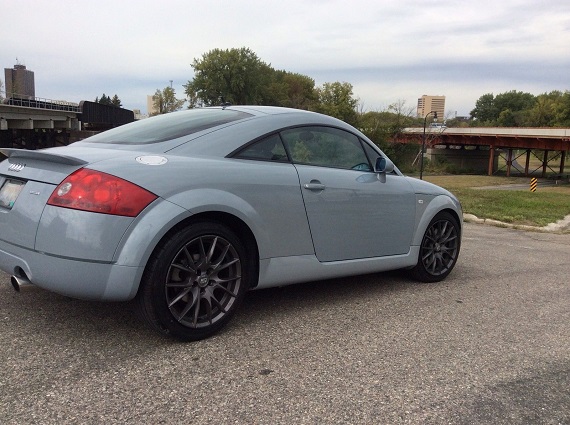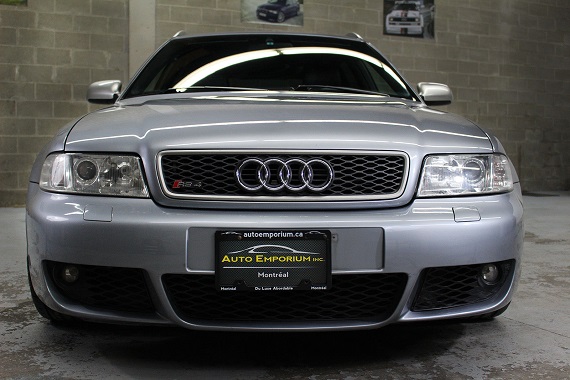I see B6 platform A4s all the time in DC, often driven by young people in their mid to late twenties. I tend to assume that many of them are hand-me-downs from wealthy parents who live in the affluent suburbs. When equipped with all-wheel drive, these cars make for competent year-round daily drivers ideal for the mid-Atlantic climate, and they still give off that expensive, German vibe even though by now they are relatively inexpensive to buy. But while the overall design remains attractive, I think the standard models can look a bit plain. If, like me, you prefer the sportier looks of the S4, but don’t want to deal with the possibility of the $8k timing chain job that afflicts the 4.2 V8 motor, the next best thing is a regular A4 equipped with the Ultrasport package. Available as a factory option, this added S4-style door blades, revised front and rear bumpers, sports suspension and 18″ multispoke “celebration” RS4-style wheels. So equipped, the ordinary looking A4 is instantly transformed into a sportier, more aggressively styled car. The USP package was available on both sedan and wagon models, and for today’s post I’ve written up one of each.
Tag: Celebration
For me, the great appeal of the early ’00s era super sedans has always been their relatively restrained styling. Unlike contemporary offerings from M, AMG and quattro GmbH, which are nakedly aggressive and loud, the cars from this period don’t look too different from the underlying models on which they were based. The RS6 is a good example. The C5 platform A6 underpinning the car typifies Audi styling of the time: good looking and functional but a bit staid. I’d be willing to admit that some of the Bauhaus-esque curves and lines give it a little edginess, especially when when viewed from the rear quarter panel, but you have to squint hard to see them. Indeed, Regular Car Review Guy has a bit about the styling of the A4 of the same era being “the future by way of the past,” and I think that the same could equally be said about the A6. This conservatism continues into the RS6, but the deeper front spoiler, flared fenders, 18″ wheels and double exhaust make for a far more muscular look and hint at the extraordinary power that lies beneath. While enthusiasts will know what it is, most other people will mistake it for an ordinary executive saloon. And that’s a good thing. There’s something seriously cool about a car that blends into the crowd, but is nonetheless capable of cracking nearly 200 MPH on the autobahn.
CLICK FOR DETAILS: 2003 Audi RS6 on eBay
Comments closedI’ll get this out of the way off the bat; not everyone likes the Audi TT, and yes, it’s not really a sports car. But excusing that it’s not a 911 although it’s similarly shaped, is it really that much of a pretender? Tight body curves that were really avant garde in the late 1990s reveal a beautifully crafted interior with lots of special details to let you know you were in a premium product. Under the hood, in its most potent form the 1.8T was quite capable as well, with 225 horsepower resulting in mid-6 sec 0-60 runs in stock form and punchy delivery. And while the Haldex-driven but “quattro” branded all-wheel drive wasn’t as slick as Audi’s other all-wheel drive systems, it works just fine in most conditions. So let’s take a look at two nice examples of these budget sports coupes:
CLICK FOR DETAILS: 2001 Audi TT 225 quattro on eBay
8 CommentsAlthough Audi had launched the idea of the super wagon with the RS2, by the late 1990s they didn’t have anything near as impressive. Sure, the S4 Avant was quick, but with 250 horsepower it was substantially less powerful than the 315 horsepower RS2 and the 322 horsepower S6 Plus. Something needed to be done to live up to the reputation of quattro GmbH, and that something involved Cosworth. Taking the basic twin turbocharged V6 from the B5 S4, Cosworth Technologies thoroughly rebuilt the motor. Now dubbed the ASJ (later AZR), the power went up 50% to 375 horsepower with an equally impressive 325 lb.ft of torque. To match the performance of the motor, quattro GmbH introduced new bodywork that channeled some of the trends set by the RS2; larger vents on the front bumper, wider sills, and larger brakes and wheels. The result was a package that lived up to the “RS” moniker with sub 5-second 0-60 runs, a 160 m.p.h. top speed, but also the brakes and grip to compete with contemporary sports cars. It may not have had the mystique of the RS2 without the name Porsche, but it was a package that was just as desirable then as it is today:
